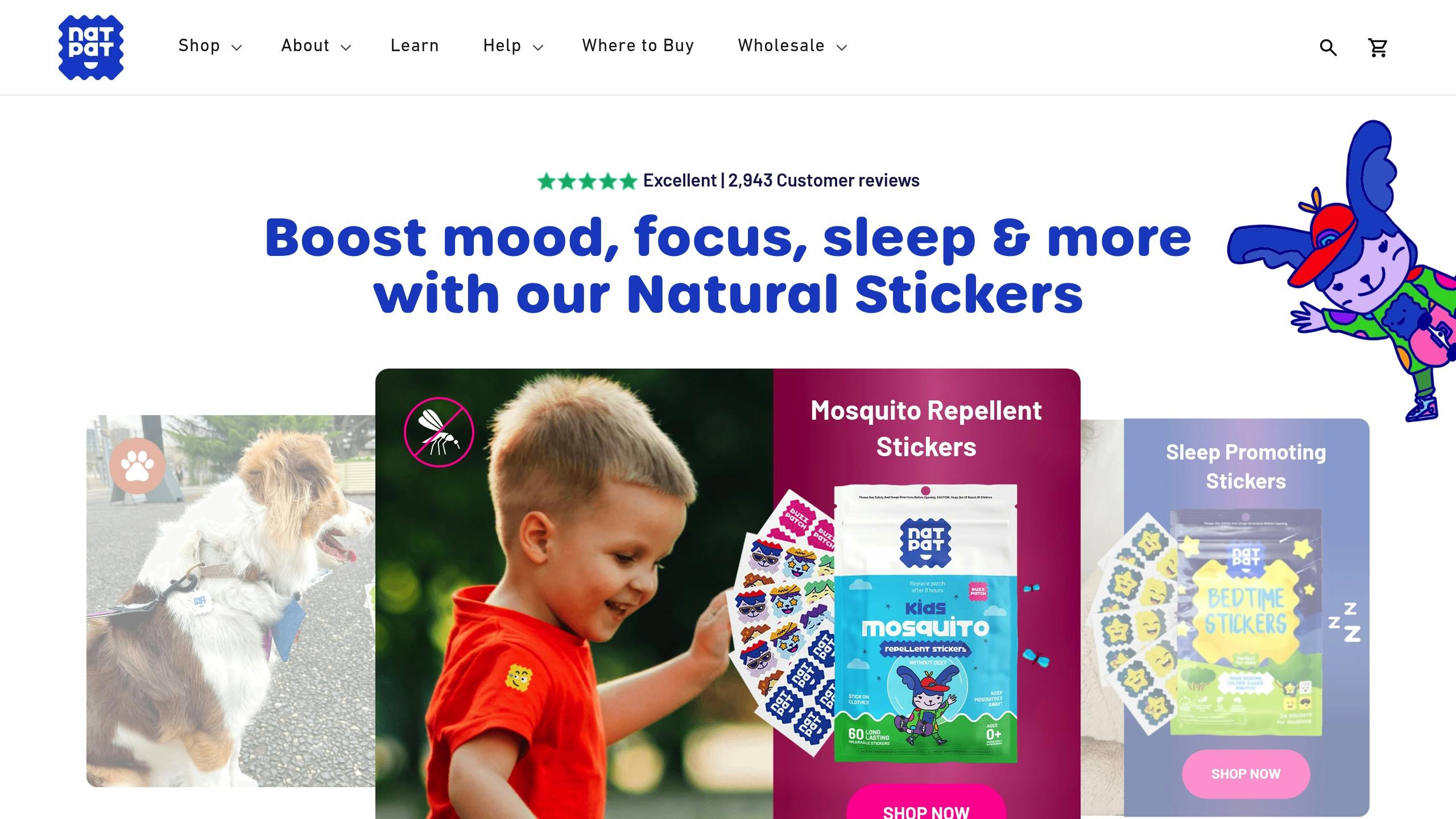SHOPPING CART
Cart item

Continue shopping

Pet anxiety is common, with up to 40% of pets showing signs like excessive barking, destructive chewing, or hiding. Long-term anxiety can harm their health, causing issues like weakened immunity, poor digestion, and disrupted sleep. Common triggers include loud noises, life changes (like moving or new family members), and even breed-specific tendencies. For example, Border Collies and Siamese cats are more prone to anxiety.
Early recognition and a structured approach can significantly reduce your pet's anxiety and improve their quality of life.
Understanding what triggers anxiety in pets is key to managing it. Pet anxiety often stems from stress in their surroundings, changes in their lives, or even genetics.
Pets can feel stressed by various factors, such as:
Studies published in the Journal of Veterinary Behavior show that providing a calm and predictable environment can reduce anxiety-related behaviors in shelter dogs by up to 75%. This highlights the importance of creating a peaceful space for your pet.
Big changes in a pet's life can also trigger anxiety. Here's how some common scenarios affect pets:
| Change | How It Affects Pets | Signs to Watch For |
|---|---|---|
| Moving to a new home | Causes disorientation and stress | Hiding, loss of appetite |
| New family members | Brings concerns over territory | Marking, aggressive behavior |
| Schedule shifts | Disrupts daily routines | Excessive barking, destructive acts |
| Loss of a companion | Leads to emotional distress | Depression, changes in eating |
Research from Applied Animal Behaviour Science shows that pets with consistent routines have lower stress hormone levels compared to those with irregular schedules. This reinforces the importance of maintaining structure in their day-to-day life.
Your pet's health and breed may also play a role in their anxiety levels. A study in Scientific Reports analyzed over 13,700 dogs and found that around 30% of anxiety-related behaviors can be linked to breed.
Breeds more likely to experience anxiety include:
Certain health conditions, like thyroid disorders, chronic pain, cognitive decline, or sensory loss, can also contribute to anxiety.
"Up to 28% of dogs with chronic illnesses exhibit anxiety-related behaviors", according to the Journal of Veterinary Medical Science [6].
Recognizing anxiety in pets is key to maintaining their overall well-being.
Here’s how anxiety might show up in pets:
Dogs:
Cats:
A study by the University of Helsinki [7] found that 32% of dogs are especially sensitive to noise, with 29% having a fear of fireworks. Understanding these behaviors and their triggers can help you take steps to reduce anxiety.
Pinpointing the cause of your pet’s anxiety is a helpful first step in managing it:
| Trigger Type | Signs to Watch For | How to Help |
|---|---|---|
| Environmental | Panting, pacing during storms | Create a quiet, secure space at home |
| Social | Trembling around new people | Gradually introduce them to strangers |
| Separation | Chewing or destruction when alone | Start with short absences to build comfort |
| Medical | Sudden anxiety symptoms | Consult your vet immediately |
Research shows that nearly 73% of dogs experience at least one anxiety-related behavior [9]. If you notice these signs worsening or not improving with basic interventions, it’s time to consult a professional.
You should contact your veterinarian if your pet exhibits any of the following:
Keeping a detailed log of your pet’s symptoms can make a big difference. Include details like the date, time, duration, intensity, potential triggers, and how well calming techniques worked. This information helps your vet create a treatment plan and identify any underlying health issues that might be contributing to the anxiety.
Helping your pet manage anxiety involves a mix of behavior training, natural remedies, and maintaining steady routines.
Desensitization involves gradually introducing your pet to anxiety-inducing situations in a controlled way. For example, you might start by sitting with your dog in a parked car while offering treats before progressing to short drives[1]. Counterconditioning focuses on creating positive associations with triggers, using methods like treats, clicker training, or teaching a 'place' command to encourage calm behavior[2].
Research from the University of Lincoln shows that dogs trained with positive reinforcement techniques tend to experience less stress overall[2].
Training is just one piece of the puzzle - natural solutions can also help ease your pet's anxiety.

The AromaWeave® technology in these patches releases calming essential oils over time, providing a gentle, natural way to ease anxiety. A study in the Journal of the American Veterinary Medical Association found that lavender aromatherapy helps reduce travel-induced stress in dogs[3]. Plus, the patches are made from biodegradable materials, aligning with eco-friendly pet care practices.
Keeping a consistent routine can make a big difference in reducing anxiety-related behaviors and helping your pet feel secure[7]:
Choosing products that are both safe and effective is a key step in addressing pet anxiety. For example, research on anxious shelter dogs found that carefully formulated aromatherapy reduced stress behaviors by up to 68% [5].
Not all essential oils are safe for pets. Dr. Emily Johnson from the University of Arizona's Veterinary Medicine Department highlights their potential role:
"The results suggest that carefully administered aromatherapy could be a valuable tool in managing canine anxiety in shelter environments." [12]
Here’s a quick guide to commonly recognized safe and unsafe essential oils:
| Safe Essential Oils | Unsafe Essential Oils |
|---|---|
| Lavender | Tea Tree |
| Chamomile | Citrus oils |
| Cedarwood | Peppermint |
| Frankincense | Cinnamon |
When using essential oils for pets, always dilute them to a 0.5–1% concentration [9]. Cats, in particular, are highly sensitive due to their limited ability to metabolize certain compounds [13].
For a safer alternative, NATPAT patches offer pet-specific formulations designed with their safety in mind.
NATPAT's biodegradable patches utilize AromaWeave® technology to deliver essential oils in a controlled, pet-safe way. These patches are made with non-toxic, naturally degradable materials and prevent overexposure through a regulated release system. Plus, their formulations are tested by third-party labs.
In a comparative study, these anxiety patches were shown to be 25% more effective in reducing stress behaviors in cats than traditional collar-based products. They also generated 80% less plastic waste, making them an eco-friendly choice [11].
Once you've selected the right products, observing your pet's reaction is crucial.
Monitoring your pet's progress is just as important as choosing the right care products. Keep a detailed behavior log [7]. Track changes in anxiety symptoms, sleep patterns, appetite, activity levels, and reactions to specific triggers.
A study revealed that pet owners who consistently documented their pet's behavior over an 8-week period saw a 30% reduction in anxiety symptoms [8]. Recording both improvements and any adverse effects ensures that the chosen products are genuinely helping your pet.
Addressing pet anxiety calls for a clear and informed approach. With 72.5% of dogs showing anxiety-related behaviors [12], early recognition and action are crucial.
Start by identifying what triggers your pet's anxiety and implement strategies that suit their needs. This could include changes in their environment or focused behavior training. Consulting with a veterinarian can help you create a plan tailored specifically for your pet.
Research also highlights the benefits of certain aromatherapy products in easing stress-related behaviors, provided they are used correctly and safely.
Consistency is key. Establish regular routines, choose safe and effective products, and work closely with professionals to support your pet's emotional well-being. By combining behavioral training, environmental changes, and natural remedies, you can help your pet feel more secure and balanced.
A stable environment enriched with regular exercise, mental engagement, and thoughtful care can make a big difference in helping your pet cope with anxiety.
You can ease your dog's anxiety using simple, natural methods. Research shows that classical music can help reduce barking and promote relaxation in shelter dogs[2]. To try music therapy:
Other helpful strategies include regular exercise, engaging your dog with puzzle toys, and setting up a quiet, cozy space for them to retreat to. NATPAT aromatherapy patches, which release calming scents gradually, can also be a useful addition to your routine. Combining these methods can create a well-rounded way to manage your dog's anxiety.
When used correctly, certain essential oils are safe and beneficial for dogs. Here are a few reliable options:
| Essential Oil | Benefits | Usage Tips |
|---|---|---|
| Lavender | Encourages relaxation | Use diluted in a diffuser or through patches |
| Chamomile | Helps reduce stress | Diffuse in a well-ventilated space |
| Frankincense | Supports emotional balance | Ensure proper ventilation while diffusing |
| Bergamot | Eases stress | Start with short exposures (5-10 minutes) |
"A study published in the Journal of the American Veterinary Medical Association found that lavender aromatherapy reduced dogs' anxiety during travel, with 32% of dogs showing decreased signs of stress" [10].
For a safer approach, consider using NATPAT aromatherapy patches designed specifically for pets.
Key safety tips:
Be cautious, as some oils like tea tree, cinnamon, and peppermint can be harmful to dogs[14]. If you’re unsure, stick with trusted pet-safe options or ask a veterinary expert for advice.

Continue shopping
